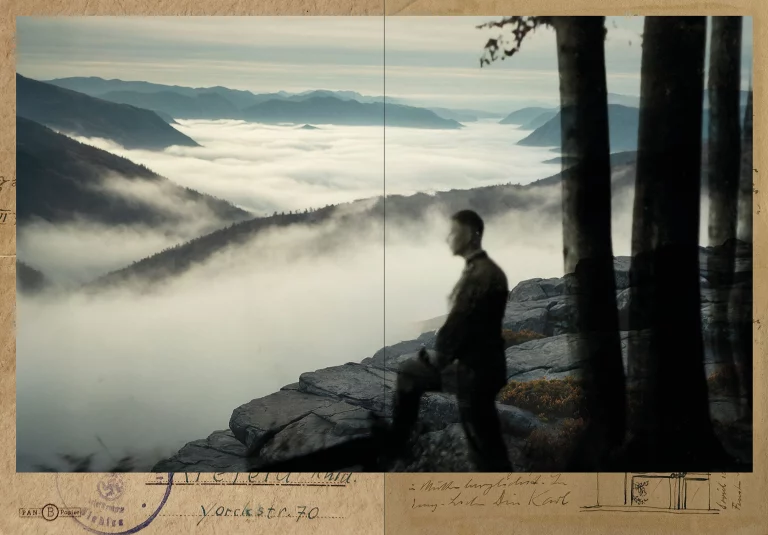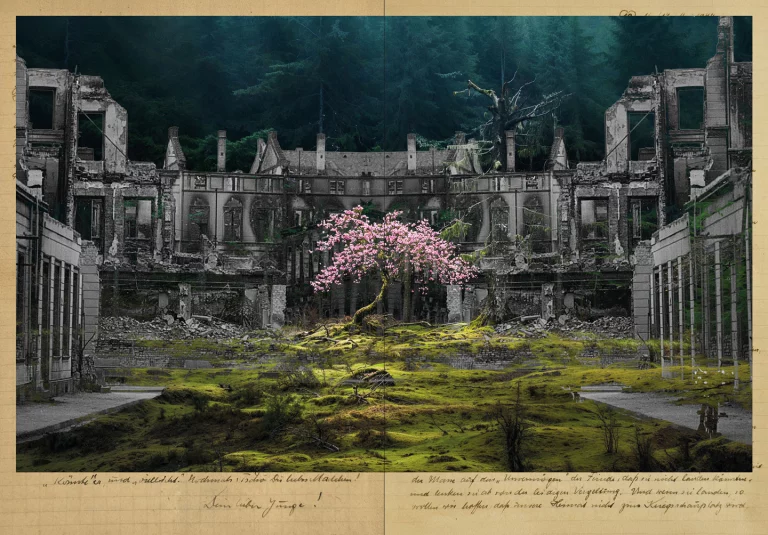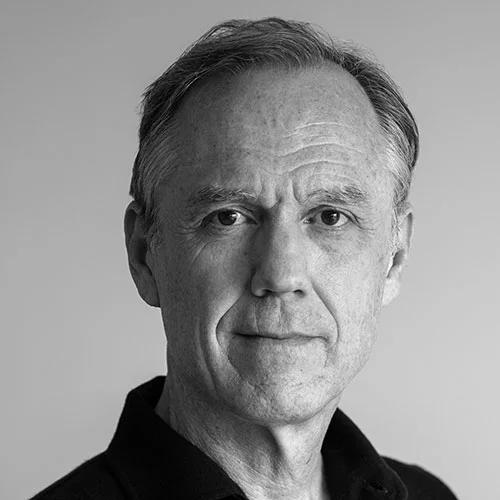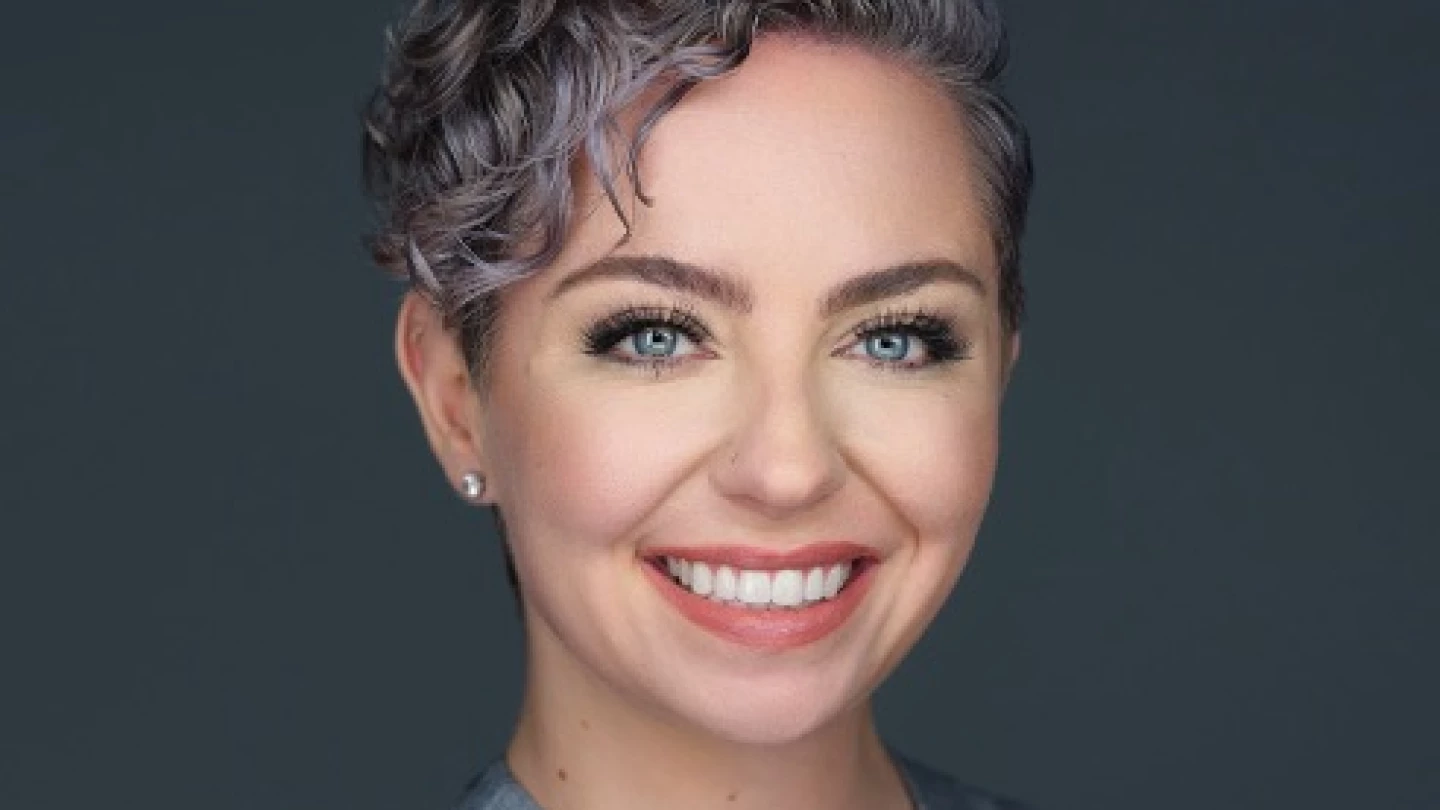Your debut publication, Love Letters from the War, is set to launch this November. It’s inspired by the true story of letters your German grandfather Karl wrote to your grandmother Grete during the Second World War. Given the deeply personal nature of this project, how did you approach blending historical documentation with artistic interpretation? What was it like to bring your own family’s story to life through this work?
The project is based on nearly a thousand field letters my grandfather wrote from the front lines—from emergency shelters and rest stops and during freezing cold nights. The world outside was marked by fear, violence, and hardship. But in his letters, I discovered something else: love and hope.
Although written more than 80 years ago, these words feel strikingly relevant today—especially in a world marked by uncertainty, conflict, and a growing sense of powerlessness. The letters offer a gentle yet powerful reminder: even in the darkest times, we are free to choose how we respond. This is a story about the courage to hold on to love, dignity, and truth when everything around us falls apart.
These words feel strikingly relevant today—especially in a world marked by uncertainty, conflict, and a growing sense of powerlessness. This is a story about the courage to hold on to love, dignity, and truth when everything around us falls apart.
Love Letters from the War stands out for its unique fusion of original letters, archival photographs, and AI-generated imagery to create cinematic scenes. What sparked the idea for this novel artistic approach? Please walk us through your creative process and share how you overcame challenges in bringing this vision to life.
Using AI instead of a camera pushes certain boundaries. But for this project, AI allowed me to recreate a world that no longer exists—and to make it emotionally tangible. Combining these generated images with original family photographs helped ground the story in reality. I hope viewers can feel the love and hope embedded in both the visuals and the written words.

Deciding to step away from BCG after 25 years must have been a moment of significant introspection. What helped you recognize that it was the right moment to move on? How did turning your lens—both metaphorically and literally—to photography shape this new chapter? What drew you to pick up the camera in the first place?
I truly enjoyed my time at BCG—it was an exciting and deeply rewarding journey. I worked with incredible people on complex challenges around the world.
After 25 years, it felt right to leave behind the spreadsheets, presentations, and boardrooms to explore something entirely new. I started by training as a chef for a year in London. “Yes, chef,” quickly became my most-used phrase. It was a completely different world—creative, hands-on, and intense.
During that time, I began photographing people on the streets of London. I was inspired by what I saw. That was the beginning of a creative journey that ultimately led me to photography. Like cooking, it’s a way to bring something beautiful into the world.
At BCG, I loved working across industries, cultures, and teams. Every project offered a new learning curve. I find that same sense of discovery in photography and bookmaking—there’s always something to explore.
Which skills, mindsets, and/or habits from your consulting career have proven most valuable in your work as a photographer?
I had to unlearn quite a few things. I remember my teacher looking at one of my first photos and saying, “Nice, Hanno, but I don’t feel it. Go take a picture of an emotion.” I was completely puzzled. I was used to data, frameworks, and measurable outcomes. But there’s no checklist for capturing emotion.
Still, many consulting skills have helped. Creating a book is a large, complex project—it requires planning, structure, and assembling the right team. That part felt very familiar.

Finally, what has your experience—both in consulting and in your creative pursuits—taught you about curiosity?
At BCG, I loved working across industries, cultures, and teams. Every project offered a new learning curve. I find that same sense of discovery in photography and bookmaking—there’s always something to explore.
And with each experience, I learn to appreciate the world a bit more. Whether it’s a beautifully composed dish crafted with care or a book bound with soft paper, an open spine, and a single red thread holding it all together, for me, it’s about learning to see.



